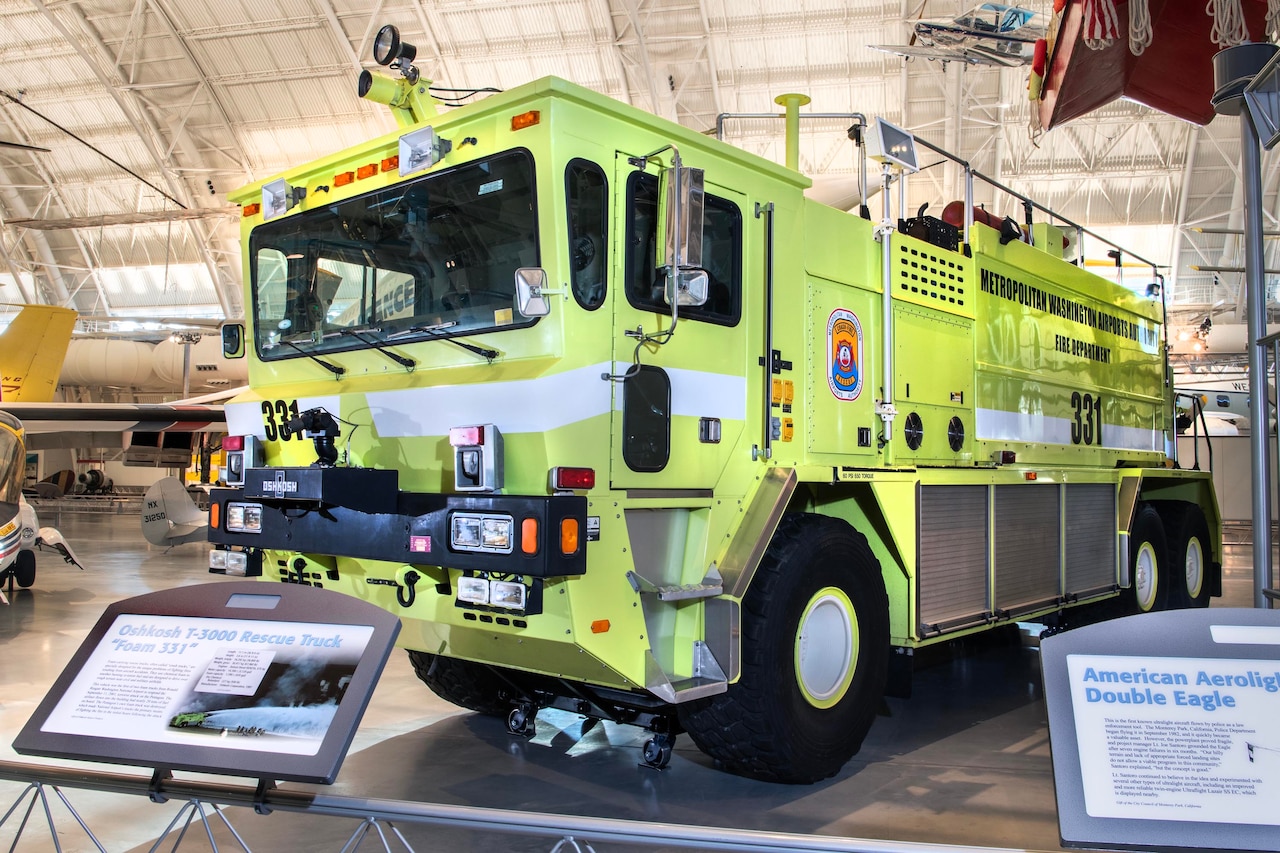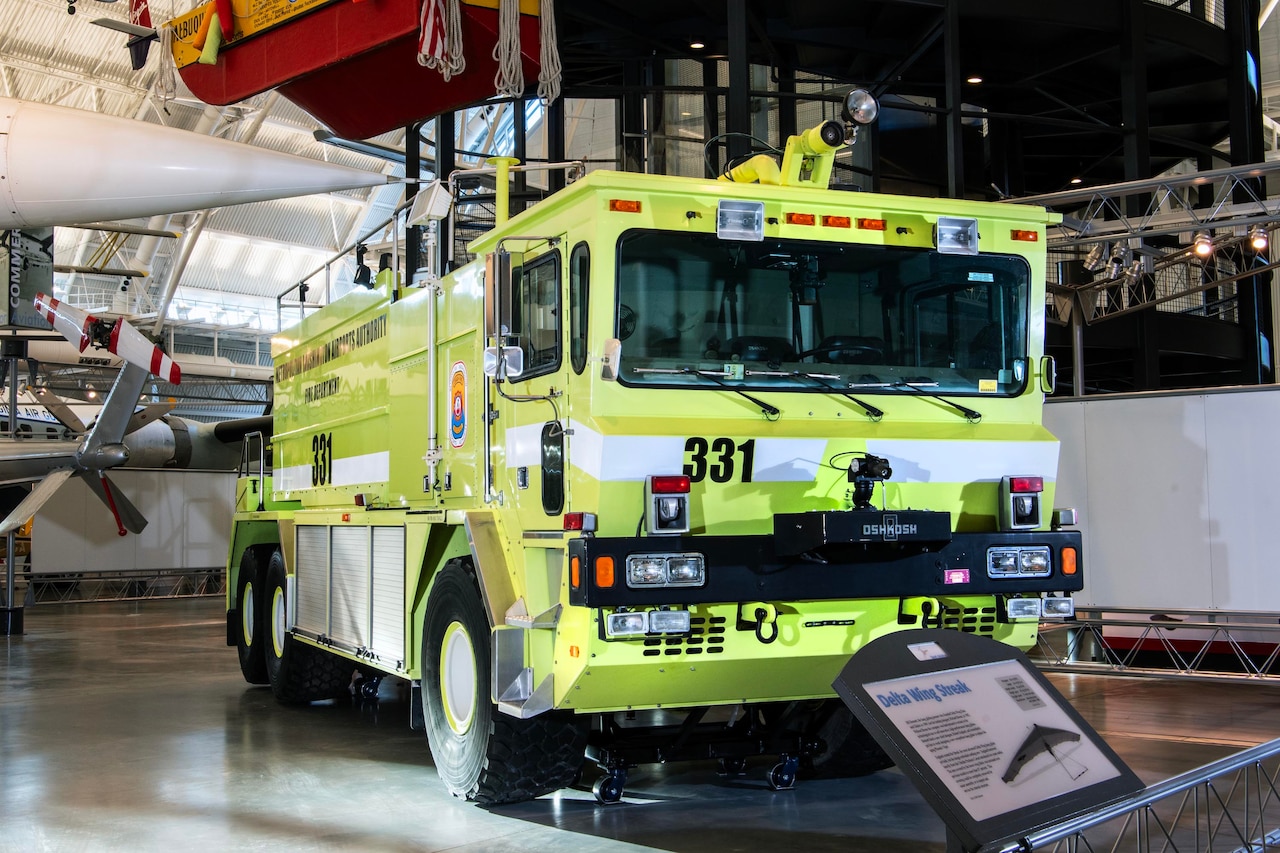The National Air and Space Museum's Steven F. Udvar Hazy Center in Chantilly, Virginia, has had a lot of massive pieces of history on display over the years, including the Space Shuttle Discovery, the Concorde supersonic airliner and the Enola Gay. But now, on the 22nd anniversary of the Sept. 11, 2001, attacks, it's got an important new addition — one of the foam-carrying aircraft rescue vehicles that was crucial to putting the flames out at the Pentagon.
Foam 331, as the truck is known, was stationed at Ronald Reagan Washington National Airport when 9/11 happened. It was the first rescue vehicle to arrive at the Pentagon — aside from Foam 161, the building's own rescue vehicle, which was heavily damaged in the attack — that was equipped with the necessary tools to contain the flames coming from the collapsed part of the Pentagon.
"The primary purpose for this type of vehicle is suppressing aviation fuel fires," Roger Connor, the Smithsonian's curator of aeronautics, said of the specialized truck. "These types of apparatus require foam in addition to a powerful suppressing agent … rather than just water."
If you're not familiar with an airport fire rescue vehicle — commonly called a "crash" truck by firefighters — it's much more versatile than a standard fire truck.
"Rather than a conventional local fire station, which has a truck that's designed to hook hoses up to a fire hydrant or a pumper truck and then have firefighters manually aim the hose at the fire, this truck has all that capability built in," Connor said. "It carries its own water with it."
He said the trucks can also shield the crew because they have built-in cannons that can spray water and foam from a distance.
"In the case of 9/11 at the Pentagon, they were not only using the trucks to spray from their own cannon, but they were also using auxiliary, remote cannons that were placed on the ground," Connor said. "The trucks were also powering those."
The curator said that, while the trucks are extremely important, they almost never see the action for which they were built.
"Aviation is such a safe form of transportation that there are almost never any major airline accidents that are reachable by this type of vehicle in the United States anymore," Connor said. "This vehicle has responded to maybe a couple of small engine fires, or that kind of thing, but it basically spent its life on standby. Sept. 11 was really the only incident in which this vehicle ever fulfilled its intended purpose."
After 9/11, Foam 331 remained in service at Dulles International Airport until 2016, when the Metro Washington Airports Authority sold it to a Canadian airport support firm for parts. Ultimately, the company sold it back to its original manufacturer, Oshkosh Corporation.
"It was essentially being sent back to be scrapped when it was located and people realized what this vehicle was," Connor said.
In recent years, the nonprofit Aircraft Rescue and Fire Fighting Working Group began working to recognize the airport firefighter community that helped on 9/11. The Smithsonian was interested in doing so using the best example of equipment possible — and the work of these rescue vehicles stood out. Thankfully, Foam 331 had just been rediscovered when the project came to fruition.
Connor said the manufacturers of the truck did the bulk of the restoration work by replacing some missing pieces, including a bumper turret, which is the foam cannon that sits on the bumper. The paint had to be refinished; some supplementary materials, such as the ladder rack that was on the vehicle in 2001, had to be replaced; and reflective striping and identification markings had to be configured back to what they were on 9/11. Connor said they just finished restoring those markings earlier this month.
"When we were putting the decals on the other day, the gentleman that was doing that was a retired firefighter. He was actually one of the on-scene commanders [on 9/11]. He was focused on the collapsed section at the impact site," Connor said. "So, it was kind of fascinating to have him be the one to put the decals on and be able to point to the picture that we had on display and say, 'That's me in the picture.'"
Connor said Foam 331 will resonate with visitors because it demonstrates the often "out of site, out of mind" roles played by first responders, aircraft grounds crews and support personnel.
"We are really honored to be able to present the vehicle," the museum curator said. "The ability to tell a more comprehensive 9/11 story is essential for acknowledging and commemorating one of the most traumatic moments in our nation's history."
Over the past two decades, the Udvar Hazy Center has displayed several items from 9/11, including fragments of the Pentagon and World Trade Centers. Still on display is the MQ-1 Predator #3034 drone that fired the first missile of Operation Enduring Freedom in Afghanistan on Oct. 8, 2001, in response to the Sept. 11 attacks.
The museum will hold a formal dedication of Foam 331 in 2026 around the 25th anniversary of Sept. 11.

